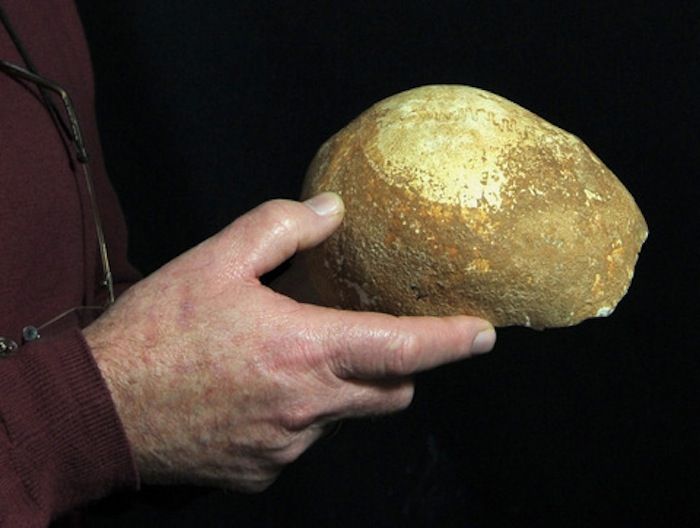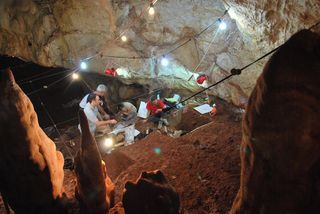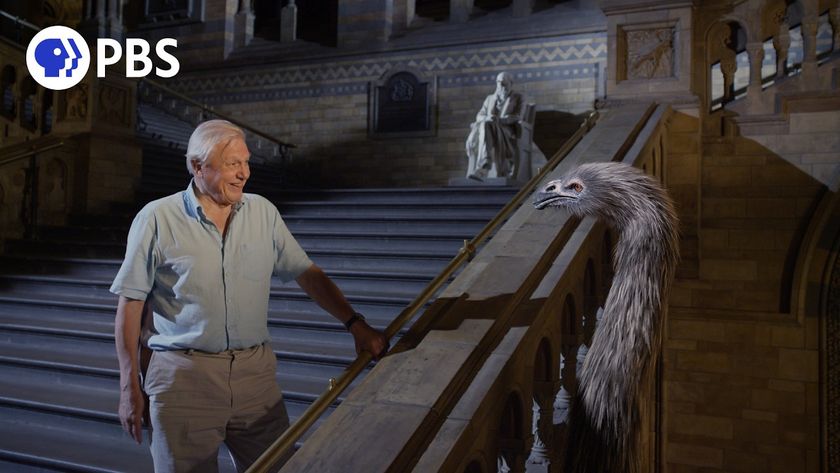55,000-Year-Old Skull Fragment May Be Linked to 1st Europeans

An ancient human skull fragment found in Israel may come from a close relative of the first modern humans to colonize Europe, researchers say.
The finding sheds light on the migration of modern humans out of Africa, and could provide insights into when modern humans first interbred with Neanderthals, scientists added.
Modern humans first arose between 150,000 and 200,000 years ago in Africa. Scientists have suggested the African exodus of modern humans started between 60,000 and 70,000 years ago, but much remains a mystery about this dispersal because of the scarcity of human fossils from this time. [See Photos of Our Closest Human Ancestor]
Now, researchers have discovered a 55,000-year-old partial skull in Israel, from about the time when modern humans expanded out of Africa. The investigators say the anatomy of this fossil may offer clues about what the first modern human Europeans were like.
The fossil was discovered accidentally in 2008, when a bulldozer unearthed a cave during a construction project at the modern settlement of Manot, in northern Israel. The original entrance to the cave was sealed off by a rockfall about 30,000 years ago, making it a relatively pristine time capsule, according to co-lead study author Ofer Marder, an archaeologist at Ben-Gurion University of the Negev in Israel.

The fossil, named Manot 1, was the skullcap, or top part of a skull, of a modern human adult. The skull contained a relatively small brain of around 1,100 milliliters; in contrast, the modern human brain averages around 1,400 milliliters, according to study co-author Bruce Latimer, a paleontologist at Case Western Reserve University in Cleveland.
"The most exciting thing about Manot 1 is that it is the first and yet the only modern human securely dated to 60,000 to 50,000 years ago outside of the African continent," said co-lead study author Israel Hershkovitz, a physical anthropologist at Tel Aviv University in Israel.
Sign up for the Live Science daily newsletter now
Get the world’s most fascinating discoveries delivered straight to your inbox.
The fossil reveals a distinctive bun shape at the back of the person's skull. This shape resembles recent African and ancient European skulls, but differs from modern humans from the Levant, the eastern Mediterranean region that includes Israel. Thisfinding suggests that the ancient Manot people could be closely related to the first modern humans that colonized Europe.
The skullcap is also evidence that modern humans and Neanderthals both inhabited this area close to when modern humans and Neanderthals interbred, the scientists added.
"The coexistence of these two populations in a confined geographic region at the same time that genetic models predict interbreeding promotes the notion that interbreeding may have occurred in the Levant region," Hershkovitz told Live Science.
The researchers plan to hunt for more fossils in the Manot Cave in July. "We expect to find more in the coming excavation seasons," said study co-author Omry Barzilai, an archaeologist at the Israel Antiquities Authority in Jerusalem.
The scientists detailed their findings online today (Jan. 28) in the journal Nature.
Follow Live Science @livescience, Facebook & Google+. Originally published on Live Science.



